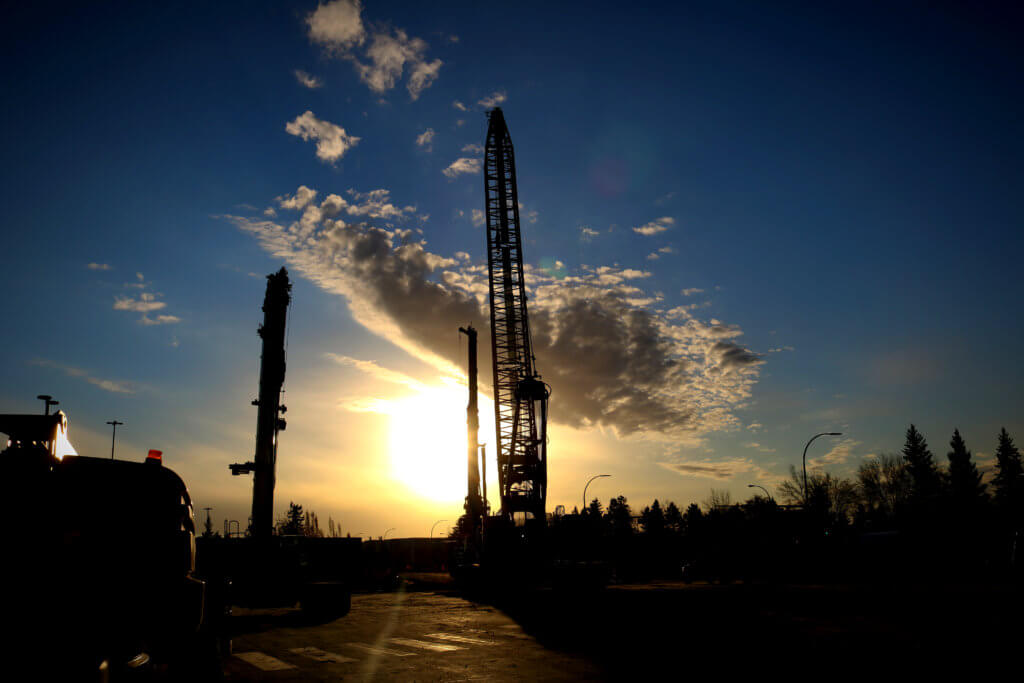Marigold Infrastructure Partners approaches the construction of the Valley Line West with great care and regard for the amount of noise and vibration caused by construction activities. While noise and vibration are unavoidable in any construction project, Marigold is committed to minimizing noise and vibration impacts along the alignment during construction.
Noise:
The City of Edmonton’s Community Standards Bylaw 14600 describes noise control. It identifies that hours of work for construction are Monday to Saturday, from 7 a.m. to 9 p.m., and on Sundays, from 9 a.m. to 7 p.m.
Sometimes, Marigold must apply for a permit to allow work outside of the regulations of the Noise Bylaw. The most common reason for this is to allow for overnight work to occur. This work can involve continuous or lengthy processes such as concrete pours and utility work — or work in roadway areas during low traffic conditions. We at Marigold incorporate noise mitigation in our work planning and construction activities where possible. Marigold makes every effort to mitigate disruptions, where possible, including but not limited to:
- Scheduling noisier work for daytime hours
- Limiting the size of equipment, where feasible.
- Regular equipment inspections and proper mufflers
- Adjust work methods
- Changing back-up alerts to strobe lights instead of beeping where possible,
Marigold tailors noise mitigation to the location and the kind of construction activity.
All project personnel has been trained in the importance of noise control, and it is discussed during “Tool Box Talks” at the start of work shifts. Project engineers and scientists monitor sound levels and evaluate nuisance noise conditions which are important for adjacent residents and impacted communities, but also for construction staff working nearby.
How do different levels sound?
85 dB(A) is comparable to a power lawnmower or motorcycle at 7.5m.
80 dB(A) is comparable to a busy traffic intersection at 15m.
70 dB(A) is comparable to a passenger car at 105 kph at 7.5m; a freeway at 15m from the pavement edge.
65 dB(A) is comparable to an urban environment during the day.
Vibration:
Vibration resulting from construction activity is measured at nearby building foundations or in the adjacent ground. The measurements identify the level of vibration being generated and help to assess construction impacts and applicable mitigation techniques.

Vibration levels can be impacted by a combination of local conditions, including the type of structure and foundation, distance from the work activity, soil conditions, and type of construction activity.
Monitoring equipment has a built-in notification system that is programmed to alert crews when vibration approaches the threshold set for that area of work. Thresholds are based on nearby buildings, structures, and utilities.
The notification allows the crew to assess the current operation and safely make adjustments, whenever possible.
Examples of construction activities that can cause vibration include:
- Equipment used in piling activities
- Movement of heavy equipment
- Excavation of harder materials, such as concrete
- Placement of heavy loads and materials
- Demolition of existing structures (buildings, foundations, utilities, etc.)
Public Commitment:
Marigold is committed to minimizing noise and vibration impacts along the alignment during construction, especially in residential areas.
If you have any concerns, please call 780-412-2183 or email us at public@marigoldinfra.ca.